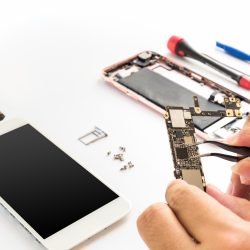Having a broken phone screen can be a frustrating experience. Whether it's a crack, a shattered display, or an unresponsive touch, a damaged phone screen can hinder your daily activities and affect your productivity. In such situations, finding a reliable phone screen repair service becomes crucial. Another effective way to find reliable phone screen repair services near you is to ask for recommendations from friends, family, or colleagues.

A guide on how to find reliable phone screen repair services near you.
1. Research and Read Reviews
The first step in finding reliable phone screen repair services is to research and read reviews. Start by searching online for phone repair shops in your area.
2. Ask for Recommendations
They might have had their phone screens repaired in the past and can provide you with firsthand information about their experience with different repair shops.
3. Check for Certifications and Expertise
When looking for reliable phone screen repair services, it's important to check for certifications and expertise. Repair shops that have certifications from phone manufacturers or industry organizations demonstrate their commitment to quality and professionalism.
4. Inquire About Warranty and Guarantees
Reliable phone screen repair services often offer warranties and guarantees for their repairs. Inquire about the warranty period and what it covers.
Conclusion:
When your phone screen is damaged, finding a reliable repair service becomes crucial. By conducting thorough research, reading reviews, asking for recommendations, checking for certifications, inquiring about warranties, comparing prices, and visiting repair shops in person, you can increase your chances of finding a reliable phone screen repair service near you.
